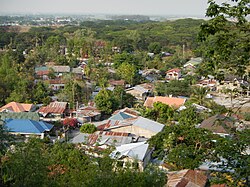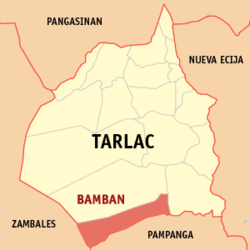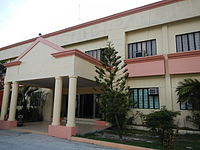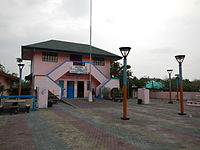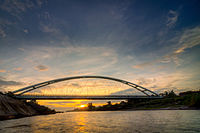
Tarlac, officially the Province of Tarlac, is a landlocked province in the Philippines located in the Central Luzon region. Its capital is the city of Tarlac. It is bounded on the north by the province of Pangasinan, Nueva Ecija on the east, Zambales on the west and Pampanga in the south. The province comprises three congressional districts and is subdivided into 17 municipalities and one city, Tarlac City, which is the provincial capital.

Mabalacat, officially Mabalacat City, is a 3rd class component city in the province of Pampanga, Philippines. According to the 2020 census, it has a population of 293,244 people.

San Antonio, officially the Municipality of San Antonio, is a 1st class municipality in the province of Nueva Ecija, Philippines. According to the 2020 census, it has a population of 83,060 people.

San Fernando, officially the City of San Fernando, is a 1st class component city and capital of the province of Pampanga, Philippines. According to the 2020 census, it has a population of 354,666 people.

Porac, officially the Municipality of Porac, is a 1st class municipality in the province of Pampanga, Philippines. According to the 2020 census, it has a population of 140,751 people.

San Luis, officially the Municipality of San Luis, is a 3rd class municipality in the province of Pampanga, Philippines. According to the 2020 census, it had a population of 58,551 people.
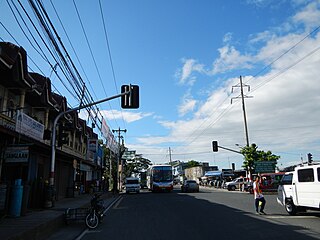
San Simon, officially the Municipality of San Simon, is a 3rd class municipality in the province of Pampanga, Philippines. According to the 2020 census, it has a population of 59,182 people.

Santo Tomas, officially the Municipality of Santo Tomas, is a 4th class municipality in the province of Pampanga, Philippines. According to the 2020 census, it has a population of 42,846 people.

Capas, officially the Municipality of Capas, is a 1st class municipality in the province of Tarlac, Philippines, and one of the richest towns in the province. The town also consists of numerous subdivisions and exclusive villages.

Concepcion, officially the Municipality of Concepcion, is a 1st class municipality in the province of Tarlac, Philippines. According to the 2020 census, it has a population of 169,953 people.

Gerona, officially the Municipality of Gerona, is a 1st class municipality in the province of Tarlac, Philippines. According to the 2020 census, it has a population of 94,485 people.

Mayantoc, officially the Municipality of Mayantoc, is a 3rd class municipality in the province of Tarlac, Philippines. According to the 2020 census, it has a population of 32,597 people.

San Clemente, officially the Municipality of San Clemente, is a 5th class municipality in the province of Tarlac, Philippines. According to the 2020 census, it has a population of 13,181 people.
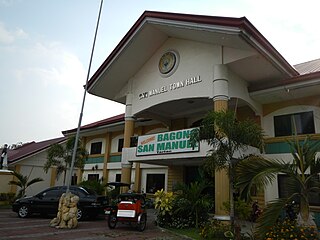
San Manuel, officially the Municipality of San Manuel, is a municipality in the province of Tarlac, Philippines. According to the 2020 census, it has a population of 28,387 people.

Santa Ignacia, officially the Municipality of Santa Ignacia, is a 2nd class municipality in the province of Tarlac, Philippines. Santa Ignacia has a total land area of 14,607 hectares. According to the 2020 census, it has a population of 51,626 people.

Tarlac City, officially the City of Tarlac, is a 1st class component city and capital of the province of Tarlac, Philippines. According to the 2020 census, it has a population of 385,398 people.

Aliaga, officially the Municipality of Aliaga, is a 2nd class municipality in the province of Nueva Ecija, Philippines. According to the 2020 census, it has a population of 70,363 people.

Bongabon, officially the Municipality of Bongabon, is a 2nd class municipality in the province of Nueva Ecija, Philippines. According to the 2020 census, it has a population of 66,839 people.
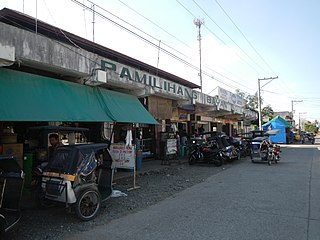
Laur, officially the Municipality of Laur, is a 3rd class municipality in the province of Nueva Ecija in Central Luzon region of Philippines. According to the 2020 census, it has a population of 38,263 people. Laur is located at the foothills of the Sierra Madre Mountains.

Quezon, officially the Municipality of Quezon, is a 4th class municipality in the province of Nueva Ecija, Philippines that was named from the 2nd president of the Philippines, Manuel L. Quezon. According to the 2020 census, it has a population of 41,845 people.
